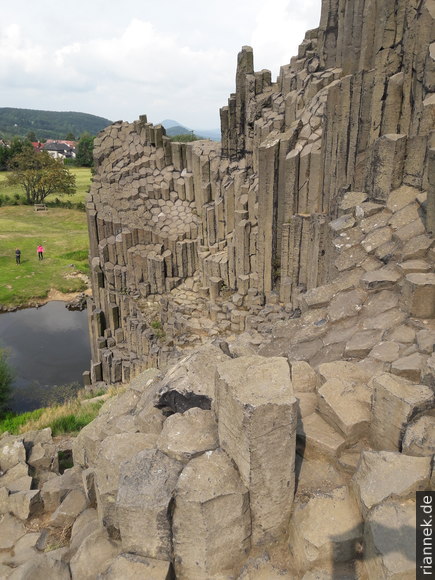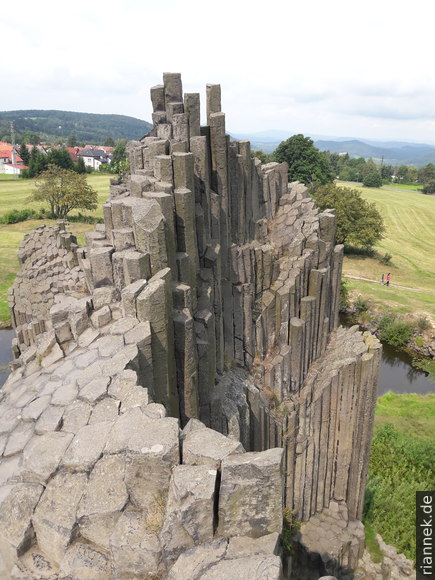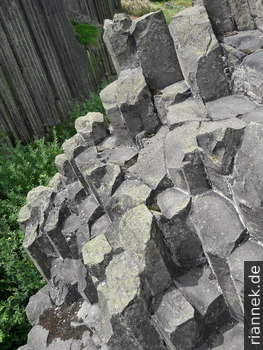Basalt columns are always fascinating — both for the geology and the aesthetics (cf. The Formation of Mountains). There are some famous examples worldwide. A particularly beautiful example is Panská skála near Kamenický Šenov in the north of the Czech Republic. The fact that this is so photogenic is not least due to the fact that basalt was quarried here for a time before the remains were placed under nature conservation at the right moment. The shapes are therefore a combination of nature and sculpture.

It is probably the remnant of a volcanic vent (i.e. below the crater inside a small volcano and not, as the sign says, a lava flow). It is nice to see that the columns tend to slope slightly towards the centre, but are generally very steep. Basalt columns form when the already solidified lava continues to cool. The volume decreases in the process. In the coolest area (in this case, the lava obviously cooled fastest at the top), a network of cracks thus develops, all aligned parallel to the thermal gradient.

Three fractures always form simultaneously, arranged like a Mercedes star, and continue to propagate until they meet another crack. Cracks that are already present influence the stress in the surrounding area and thus the formation of new cracks and “Mercedes stars”, so that a honeycomb pattern with hexagonal columns tends to develop (but not all columns are hexagonal). As cooling continues, these fissures continue further inwards (in this case, downwards). Columns as tall and regular as this can only occur if the lava body is cooled slowly and only from one side, and the overall geometry is very regular. This is especially the case with volcanic vents, sills and dykes, also with lava lakes and some lava flows — but usually if it is a sequence of many lava flows erupted in quick succession, especially with flood basalts.

The volcano was active in the Tertiary, a period with many active volcanoes throughout Central Europe, while large rift systems were formed by extension. Not far from here, the Eger Graben was formed on the southern side of the Ore Mountains, and there were many small volcanoes throughout northern Czechia. In many cases (and probably also here), strictly speaking, the rocks are not basalt, but alkaline rocks such as tephrite or basanite.
The rock is located on the eastern outskirts of Kamenický Šenov directly on the main road 13/E442. This road connects, for example, Bohemian Switzerland and Bohemian Paradise.
Read on
Basalt columns near Garni, Armenia
At Fingal’s Cave on Staffa
Trosky, a volcano in the Bohemian Paradise
At the Prebisch Gate (Pravčická brána) in Bohemian Switzerland
The Formation of Mountains